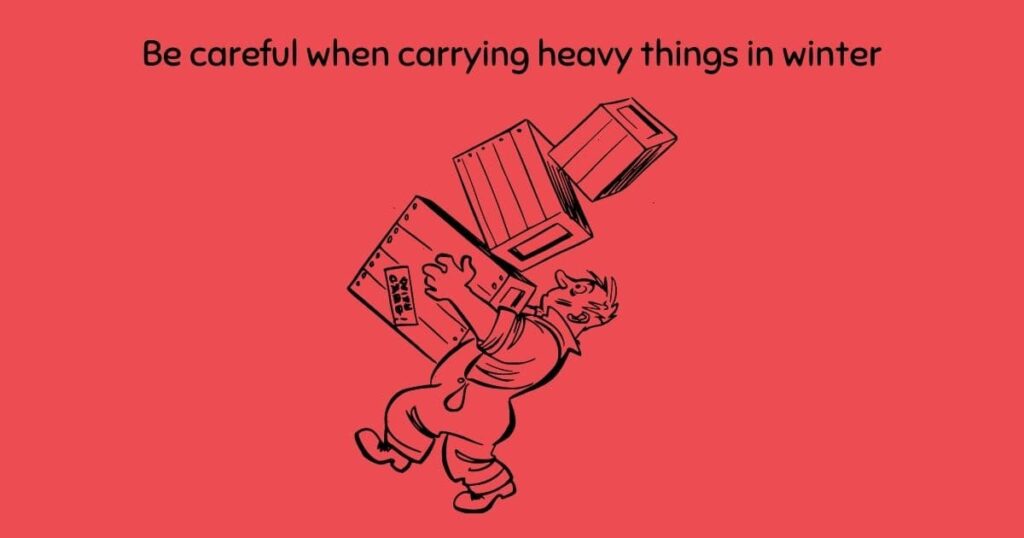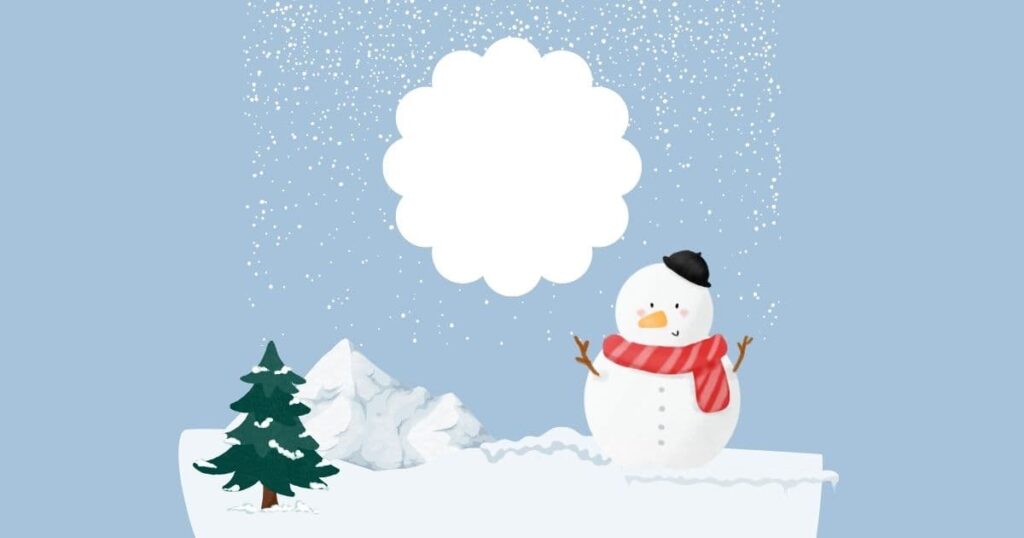11 Best Precautions To Take In Winter
There are some precautions to be taken during the winter months.
Especially the elderly people have a high risk of slipping and breaking their bodies during the winter months.
Older people’s bodies are weak and if their bones are broken, it is very difficult to heal.
The reason for this is that the body can no longer develop itself.
For this reason, there are some precautions that especially the elderly should pay attention to during the winter months.
Listed below are some suggestions to consider in winter:

What Will We Learn?
1. Pay Attention To The Choice Of Shoes
It is appropriate to wear shoes with non-slip soles that protect our feet against water and cold.
2. Use Correct Walking Technique
Be especially careful not to hold anything in your hands. Unless you have to, wait for the weather and land conditions to improve. Seeing the needs of elderly, sick and pregnant women by others will prevent these dangers.
3. Avoid Jokes
Reckless actions can put our loved ones in trouble for a lifetime.
Especially places that are heated by the burning of solid fuels carry risks in terms of mass deaths in windy weather.
Extinguishing all kinds of stoves before going to sleep, cleaning the chimney, and providing tools to detect gas leaks are appropriate measures.
4. Dress Well
Bad clothing can reduce body temperature and weaken the immune system.
However, clothing preferences that cause sweating invite diseases.
Common cold, acute pharyngitis and tonsillitis, acute laryngitis and acute sinusitis are the most common upper respiratory tract infections in winter.
5. Eat Regularly
Prefer especially seasonal fruits and vegetables.
The state of hunger, irregular nutrition adversely affects the defense system.
6. Organize Your Sleep
Regular sleep increases our endurance to the intense winter tempo in working life and daily life.
In particular, even microbes that do not normally cause disease in our body can cause infections when the immune system is weakened.
7. Do not use unnecessary antibiotics
Using antibiotics without the advice of your doctor strengthens microbes.
Viruses often infect the upper respiratory tract. Antibiotic therapy is useless.
8. Get vaccinated
Those who have diseases such as diabetes mellitus, chronic bronchitis, sinusitis, asthma and the elderly, especially those that require long-term and regular medication, should get vaccinated with the recommendation of a doctor, unless they have allergies.
9. Wash Your Hands Frequently
The cleaning of our hands, which are open and in contact with every part of our body, is our most important measure in preventing diseases.
Washing hands with liquid soap and plenty of water in public living environments prevents the transmission of diseases.
Soaps used in daily life do not have to have antibacterial properties.
10. Cover Your Mouth While Coughing And Sneezing
We should cover our mouth with the help of a handkerchief and/or our arm (with the inside of our elbow covering our mouth and nose).
This will help prevent the spread of germs in us.
The little ones, the old and the sick may not be able to stand the diseases that we can stand.
11. Make Sure Your Noses Are Not Stuffy
The frequency of upper respiratory tract infections may increase due to stuffy noses.
Drops of natural and natural equivalent liquids called sea water or physiological saline can be used.
Other precautions to be considered during the winter months are listed below:

- Choose clothes that will keep your body warm
- Do not stay in open areas for a long time.
- Beware of slipping hazard.
- Stay away from dangling electrical wires.
- Do not go out unless you have to, when the temperature is -10 degrees and below.
- You can salt the pavements in front of your house so that they do not become icy.
- Check if the sewer is closed.
- Watch out for icicles hanging from the roofs.
- Protect your pipes against freezing.
- Be prepared for power cuts, have a flashlight and a searchlight nearby.
- Have extra drinking water available in case of water shortages.
- If you have a drug or machine-related treatment process, check the supply of drugs and whether the devices you use are working, or take precautions by informing the authorities about your situation.
- Make sure you have the necessary equipment in your vehicle. (Use snow tires, have chains, tow ropes, etc.)
- Make alternative plans.
- If you are traveling, contact Regional Traffic for information on the condition of roads and traffic.
- Tell your family and relatives where you are and where you are going.
- Do not wear shoes with high heels and leather soles.
- Walk carefully on icy areas at building entrances.
Take Precautions Against Black Ice
Meteorological events such as freezing rain, freezing drizzle or sleet, and roads cleared after a snowstorm appear wet.
In reality, the road is covered with a thin layer of ice called “black ice”.
Black ice is a transparent but very slippery layer of ice that is not always visible.
Especially bridges and ramps are black ice traps.
What Should People Who Fish In Frozen Lakes Pay Attention To In Winter?
Fishing in frozen lakes during the winter is an activity that many people enjoy.
Be sure to follow the precautions below when you do such activities:
- Do not drill too many holes on the ice.
- Do not gather in one place in large groups.
- It is recommended to wear a life jacket when on ice.
What to do if you fall into the ice:
- Call for help immediately when you are in trouble.
- Try to get rid of outerwear and shoes, wet clothes will quickly draw you into the water.
- You should rest your elbows on the edge of the ice and bring your body to a horizontal position. So the legs will be close to the water surface. Then you should carefully bring the leg closest to the ice edge to the ice and return to the ice.
What to do if a person fell into the ice before your eyes:
- Shout out that you’re going to help him right away.
- Crawl closer to the polynya with your arms wide apart.
- If possible, put skis, wood, plywood under you to increase the support area and ride on them.
- Do not crawl to the very edge of the ice.
- If you crawl, you can also fall into the water.
- Try handing the victim a pole (with a rope loop), belt, scarf, skis.
- Stay 3-4 meters away from the ice edge and throw the tied belt, scarf or board to the person in the water.
- The person removed from the water should be immediately warmed up and given first aid: put on dry clothes, given a warm drink, and then taken to a medical facility.

Some Tactics To Avoid Slipping In Winter
- Do not put your hands in your pockets while walking on icy roads! This increases your risk of falling.
- Putting the palms on the ground at the time of falling prevents any part of the body from hitting the ground hard.
- Do not walk arm in arm on snowy and icy roads. Because in this way, you can upset each other’s balance and fall.
- You can wear shoes with non-slippery soles, rubber soles and coarse knurling.
- In order to prevent ankle injuries that may occur after falling, you should prefer boots that grip your ankle.
- Try to take small and balanced steps while walking.
- If possible, do not go up and down steep slopes.
- Use the handrails when going up and down stairs.
- Do not carry your child or heavy items on your lap. Also, be careful not to carry your bag with both hands.
How Should You Help Someone Who Has Fallen On Ice?
Fracture should be suspected if there is pain that increases with movement after a fall or impact, deformity of the impinging limb, swelling and bruising due to edema or bleeding.
If a fracture is suspected, soft tissues such as vessels and nerves around the broken bone ends should not be damaged.
What you need to do for this is to try to keep the patient as still as possible.
In case of injuries on the arm, you should gently remove items such as rings and watches.
If there is a fracture of the wrist or ankle or around the shoulder, you should call the emergency service by performing temporary fixation.
When swelling occurs, you can apply ice complex to the area by not making direct contact with the skin.
You may not always be sure about the condition of the injured area.
In emergencies, the problematic area should be temporarily bandaged.
Then the patient should be kept still.
Because moving the injured person carries a risk since the condition and location of the fracture cannot be known exactly.
Moving the patient unknowingly can increase internal bleeding and cause pain to the patient.
